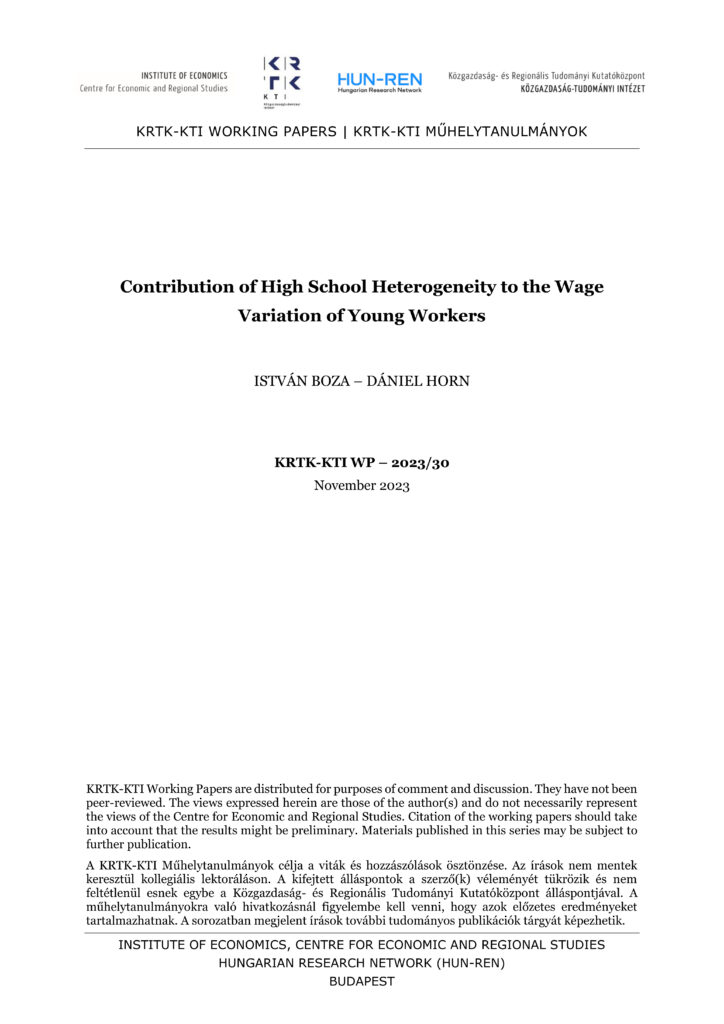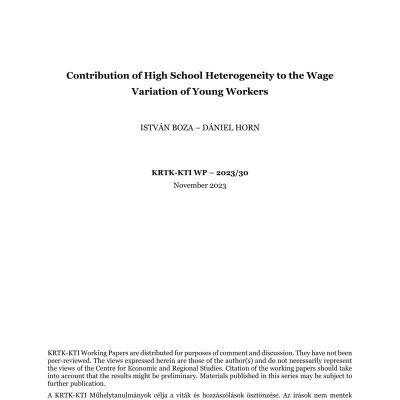The aim of this paper is to quantify how much of the initial wage differentials of young workers is explained by the secondary school they attended, and to disentangle the (descriptive) channels contributing to these differences. The analysis is based on the HUN-REN CERS Admin3 database, taking advantage of the fact that for some cohorts, young people’s secondary schooling (and students’ school standardized mathematics test scores) and wage outcomes at their early career can be observed simultaneously. Using wage decomposition methods, we separate the channels of firm and occupational selection from the direct returns to further education. Our analysis suggests that about 10 percent of the total wage dispersion of young people aged 18-25 (and already working) is generated at the school level. This also implies that the correlation between the wages of any two students of the same school is 0.1. Another novelty of the paper is that we show that a substantial part of these correlations are due to occupational and workplace selection (e.g. students from a given school type are systematically more likely to go on to well-paid jobs). If we remove these selection effects, the effect of schools on wage dispersion, the correlation between the latent skills of students, shrinks to 4 percent. Finally, we also compare schools of different quality based on different school characteristics (e.g. average test scores), which allows us to further stress the importance of the selection channels.
Publikációk / Contribution of High School Heterogeneity to the Wage Variation of Young Workers
2025
Szep
18
H
K
Sz
Cs
P
Sz
V
1
2
3
4
5
6
7
8
9
10
11
12
13
14
15
16
17
18
19
20
21
22
23
24
25
26
27
28
29
30
1
2
3
4
5
Következő hónap >
a
2025
Szep
18
H
K
Sz
Cs
P
Sz
V
1
2
3
4
5
6
7
8
9
10
11
12
13
14
15
16
17
18
19
20
21
22
23
24
25
26
27
28
29
30
1
2
3
4
5
Következő hónap >



